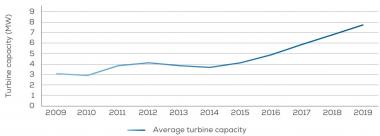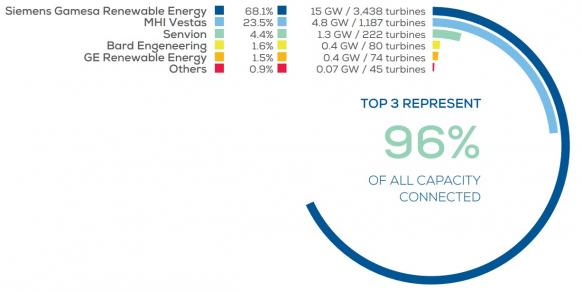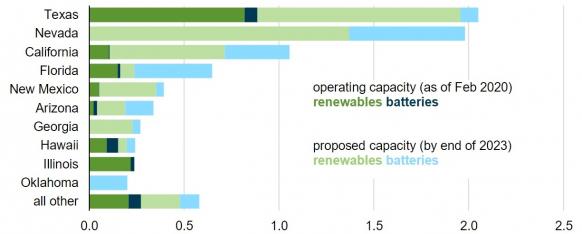Siemens Gamesa unveils giant 14 MW turbine; New England study favors shared offshore grid
Our pick of the latest wind power news you need to know.

Related Articles
Siemens Gamesa to deploy 14 MW offshore turbines by 2024
Siemens Gamesa has developed a new 14 MW offshore wind turbine, the largest ever, and plans to start commercial deployment by 2024, the company announced May 19.
The new turbine will increase annual energy production (AEP) by 25% compared with Siemens Gamesa's previous 11 MW model, the company said. The new model will have a rotor diameter of 220 meters and blades of length 108 m and output can be boosted to 15 MW, it said.
Offshore turbine dimensions are growing rapidly as operators seek lower costs. Larger units increase output and reduce the number of turbines required, cutting installation and operations and maintenance (O&M) costs.
Previously, GE Renewable Energy's 12 MW offshore turbine was the largest on the market. Leading offshore developer Orsted will deploy the first of these turbines at the 120 MW Skipjack project in New Jersey by 2022.
Average capacity of new offshore turbine installs
(Click image to enlarge)
Source: WindEurope, February 2020.
Siemens Gamesa's latest model incorporates a lightweight design that limits the nacelle weight to 500 tons. This will allow "optimized tower and foundation substructures" that will help reduce the cost of materials and transport, the company said.
Siemens Gamesa aims to build a prototype by 2021 ahead of commercial deployment in 2024.
Offshore installed turbine capacity by supplier
(Click image to enlarge)
Source: WindEurope, February 2020.
In February, the US National Renewable Energy Laboratory (NREL) launched a new 15 MW IEA reference turbine design.
Valid for fixed-bottom and floating wind designs, the reference design provides open access to a complete wind turbine system, allowing technology developers to evaluate performance and cost.
Developed with the Technical University of Denmark (DTU) and the University of Maine, the new reference design can provide a baseline for 20 MW models.
New England offshore grid could cut costs by 10%
The installation of a shared offshore transmission network for 3.6 GW of New England offshore wind capacity would reduce grid costs by 10% compared with project-based onshore links, according to a new report published by the Brattle Group consultancy, commissioned by offshore transmission developer Anbaric.
A shared offshore network would cut cable costs by around a half, reduce the impact on fisheries and marine ecosystems, and promote competition between developers, Brattle said.
The shared offshore grid approach would reduce transmission losses by around 40% and competitive procurement would cut transmission costs by up to 30%, based on studies of UK offshore and US onshore grid trends, the report said.
The UK is the world's leading offshore wind market with an installed capacity of 10 GW.
UK projects have been connected to individual radial offshore transmission links, but UK authorities are now developing a new centralized offshore transmission system to minimize the cost of rapid growth in offshore wind power in the coming years.
The new UK grid design could support clusters of projects further from shore and reduce the need for energy storage, industry experts told New Energy Update.
US to double renewables plus storage plants by 2023
The number of US solar and wind assets co-located with batteries will double from 53 in 2019 to 109 by 2023, according to the US Energy Information Administration's latest inventory of power plants.
The number of renewables plus storage plants has tripled since 2016. Texas currently hosts almost half of this capacity and Nevada will soon rival Texas as giant projects such as Quinbrook's Gemini solar plant come online.
Top 10 US states for renewables plus storage capacity
(Click image to enlarge)
Source: U.S. Energy Information Administration (EIA), Preliminary Monthly Electric Generator Inventory
Renewables developers are building larger projects to benefit from economies of scale. The average renewable capacity at new coupled facilities is forecast to hike from 34 MW in 2019 to 75 MW by 2023 while average battery capacity will soar from 5 MW to 36 MW, EIA said.
The storage of excess energy is the most common application for co-located batteries but the majority of facilities serve more than one function, EIA noted. Frequency regulation, system peak shaving and backup power are also common applications.
New Energy Update



